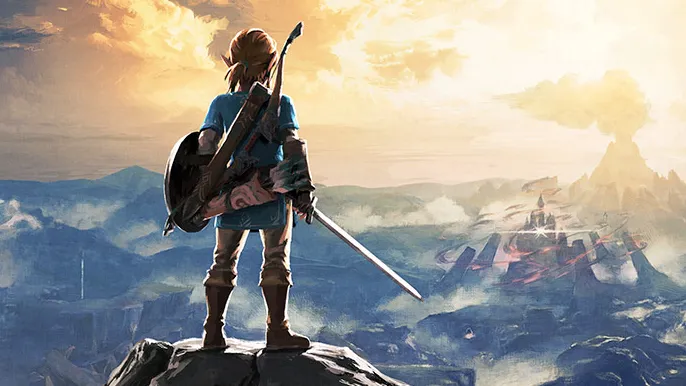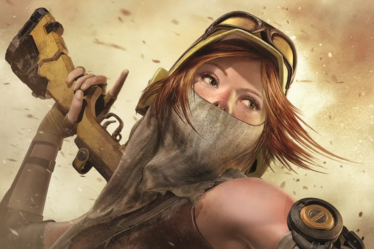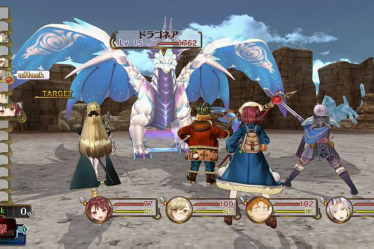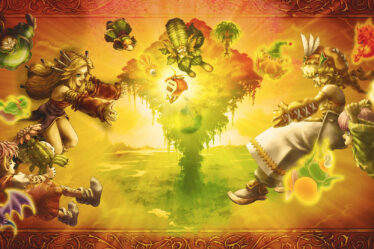
This article was originally published in Italian on GeekGamer.it in 2017.
Talking about a chapter in The Legend of Zelda series in an objective, concise way, without indulging in a pompous array of praise, seems to be increasingly difficult, especially in an era where specialized press and gaming blogs are often accused of being at the mercy of the industry’s big names and their communication teams. Fortunately, this is not the case for our site, which has always stood out for its straightforward approach in explaining what worked and, more importantly, what didn’t work in some of the most high-profile commercial ventures in recent years, particularly many video games from Japan—works often misunderstood by the average player, either due to a cultural background that’s deeply distant from ours or simply because of “lost in translation” visual and thematic codes.
The Legend of Zelda: Breath of the Wild stands apart from much of the Japanese and modern gaming landscape, though it indulges in the contemporary obsession with “seamless” exploration, without waiting times, positioning itself as Nintendo’s first major Open World production.
The adventure begins with Link’s awakening, a warrior suffering from amnesia who finds himself in a mysterious cave. Soon, a female voice will guide him to the exit of the dark crypt, introducing him to an entirely explorable world of unimaginable size compared to the series’ recent past. The voice, which will soon be revealed to belong to none other than Princess Zelda—the very namesake of the series—will later ask the player to save the kingdom of Hyrule (or “Irule,” as it’s pronounced by the Italian voice actors) and dive headfirst into an adventure that takes them to explore the world “after the ruin” that occurred 100 years ago. Thus begins an epic yet gentle journey, which can be completed relying on one’s own strength or—if following the storyline—on the help of four giant biomechanical colossi. The unique feature here is that the game’s structure is entirely open, and right after completing the first tutorial zone, players can freely choose whether to follow the narrative’s path or head directly towards the final enemy’s lair.
Deciding instead to face and exorcise the power of Calamity Ganon—the long-time nemesis of Link—players will encounter the trials of some fallen warriors from long ago, while also uncovering the mysterious past of yet another incarnation of the Nintendo hero and delving deeper into the relationship between Link and the tragic heroine Zelda. This storyline comes to life in a few—optional—animated scenes, but in its simplicity, it sketches an innovative Zelda with distinctly human traits, almost contrasting with her more fairy-tale-like and therefore highly stereotypical representation in the series’ history.
With such a premise, it’s clear that the narrative setup is as classic as ever, even considering the vast world full of things to do and secrets to uncover, but Nintendo once again surprises both veterans and newcomers with a gameplay structure that, in fact, gives players total freedom, completely uprooting the linear nature of recent series iterations in favor of an open-ended development, shaped around the player’s (unspoken) choices and playstyle. At this point, it’s clear that, in Nintendo’s eyes, game models like those of Twilight Princess and Skyward Sword—tightly linked to the franchise’s tradition and the gameplay foundations of Ocarina of Time—seem completely outdated, and it’s no surprise that, in the coming years, the Zelda series will continue to evolve following the path set by Breath of the Wild. The reason is simple, and there’s no point in beating around the bush: the game works, it’s fun, and it captivates, evoking a distinct sense of wonder, even for a seasoned player like myself. Finding myself wondering what might be hidden inside an unexplored cave, even after several dozen hours of gameplay, in an era where AAA productions often choose the path of homogenization, is probably one of the most refreshing experiences I’ve had the pleasure of enjoying in the past ten (or more) years. Nintendo’s bet was precisely to subvert the logic behind the series, while still bringing back elements that, on their own, have represented it since its origins on the Nintendo Entertainment System. A blend of new and old that, if observed from a distance, shows us that Breath of the Wild is essentially a “2017” version of the first, classic chapter: that original The Legend of Zelda that began with an old man encouraging the player to arm themselves with a sword to defend against enemies in an enormous, hostile world that could be freely explored to learn about it and gather the tools needed to defeat the monstrous threat of Ganon.
However, it’s important to forget the barren, empty Hyrule of Twilight Princess or the long, forced corridors of Skyward Sword: Breath of the Wild is, as the title suggests, a breath of fresh, wild air that challenges series fans with a redesigned difficulty level that reflects the dangers of a world that, thankfully, can never be taken lightly. Nintendo has created a universe governed by specific rules and physical and “chemical” models (on that note, I recommend checking out this great video by Italian YouTuber MVidya), on which many of the mechanics and challenges players will face are based. The game challenges players to find the balance that best fits their playstyle—using the environment to bypass or eliminate groups of enemies—almost always formidable—fearing the arrival of a lightning storm that forces players to avoid using metal equipment (or risk getting struck!), collecting ingredients to cook a dish and enjoy specific stat bonuses are just a few examples of the situations encountered during the frenetic exploration. This leaves the door wide open for a range of random possibilities, adding a healthy dose of unpredictability to the exploration model. One could almost say that the true protagonist of The Legend of Zelda: Breath of the Wild isn’t the player nor the group of supporting characters who will occasionally appear before the silent—but ever-expressive—Link in his eternal wandering, but the world itself and its wealth of content, optional activities, and environments to explore. Consider that simply completing the main quest—something players can forget about at any time—won’t even begin to scratch the surface of the hundreds of activities scattered across the regions dominated by towering, climbable structures that, once activated, will allow for a “mapping” of the area and teleportation (which fans have already compared to the open-world titles made by Ubisoft). There’s so much to do in a world made alive and believable by adventurers moving along the roads, seeking shelter from the elements, and calling for help when attacked by enemies, by wildlife grazing in vast, walkable prairies or riding various beasts, with surprises lurking around every corner—even when, in later stages, players might assume they’ve seen everything the world has to offer. What’s certain is that those who complain about the absence of “big” themed dungeons, as seen in previous entries in the series (Breath of the Wild only has 4 main ones and hundreds of smaller ones, all with modest size), might want to put on a pair of glasses and reconsider the idea that the entire Hyrule should be considered one massive dungeon full of dangers and challenges to be faced with skill, joycons in hand, and cunning, after mastering the logic of a world that reveals itself without being redundant or didactic, and without on-screen text or tutorials breaking the gameplay rhythm. And that, in today’s world, is a great show of trust in the intelligence of the player who buys the game. Well done, Nintendo!
That being said, there are some issues, mostly technical in nature, that could—at least in the eyes of some—diminish the value of what has proven to be one of the greatest and most solid AAA productions in recent years. I’m particularly talking about the well-discussed drops in action fluidity when exploring certain environments (especially in the Wii U version), but also a technical profile that’s largely supported by excellent character design work and artistic direction, once again moving in a cartoonish style halfway between the geometric synthesis of Wind Waker’s cel shading and the pastel colors of Skyward Sword. It’s safe to say that The Legend of Zelda: Breath of the Wild doesn’t look bad in docked mode, when projected on a television—perhaps even a large one—but undoubtedly shines brightest in portable mode, where the aforementioned frame rate drops are virtually eliminated (especially after the recent patch) and the game’s internal resolution (720p) matches that of the Nintendo Switch screen. Personally, I found it a bit difficult to enjoy the adventure with only the joycons, but switching to the more ergonomic—though indeed expensive—Pro Controller improved the experience considerably, especially considering the number of inputs mapped onto the buttons. Some uncertainty is also noticeable in the camera handling during battles with multiple enemies at once. In this regard, the issue lies in the fact that, despite its revolutionary new features, Breath of the Wild still relies on mechanics—like “lock on”—inherited from the now old Ocarina of Time. The result isn’t the smoothest, most modern combat system ever, but with a little effort, players will get used to the inability to shift attention between enemies without having to move during fights.
The soundtrack, however, is excellent. For once, it’s not entirely led by Koji Kondo, the franchise’s historic composer. The music is dynamic, able to highlight the atmosphere of specific environments as well as inject more emotion into key moments of the adventure. The musical pieces vary their instrumental layering depending on how the player behaves, with surprisingly epic results during battles with important enemies. The Italian voice acting, while limited to sporadic cinematic scenes, doesn’t surprise in terms of quality or performance but gets the job done without ever being unpleasant. It’s a shame “Hyrule” isn’t pronounced the right way, though, dear voice director.
The Legend of Zelda: Breath of the Wild is a rare gem in a landscape of AAA productions that try to follow safe and standardized creative models, designed around the simple idea of making players feel at home and showering them with rewards to keep them coming back. Nintendo’s bet was instead to create a brand-new world, one that’s both familiar and ready to be explored, capable of providing genuine fun and surprise without becoming overly self-referential or pompous. This Nintendo Switch launch title—which also marks the swan song of the Nintendo Wii U—has managed to highlight its strengths to the point of making its occasional flaws seem secondary, and personally, I can’t wait to see how Nintendo will use this new open-world philosophy in the future iterations of this historic franchise.


